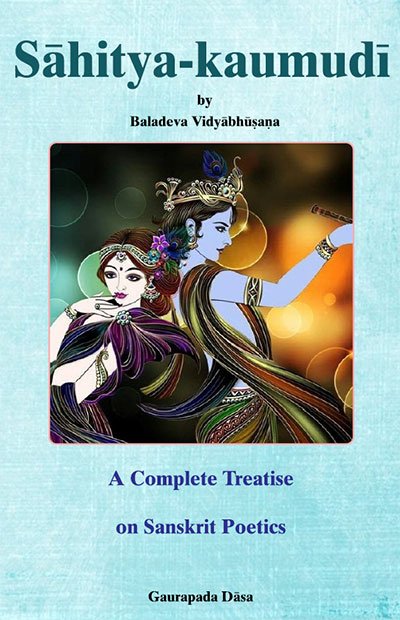Sahitya-kaumudi by Baladeva Vidyabhushana
by Gaurapada Dāsa | 2015 | 234,703 words
Baladeva Vidyabhusana’s Sahitya-kaumudi covers all aspects of poetical theory except the topic of dramaturgy. All the definitions of poetical concepts are taken from Mammata’s Kavya-prakasha, the most authoritative work on Sanskrit poetical rhetoric. Baladeva Vidyabhushana added the eleventh chapter, where he expounds additional ornaments from Visv...
Text 10.239
क्रमेणोदाहरणम्,
krameṇodāharaṇam,
Examples are shown in order:
dhavalo’pi mama svāntaṃ raktaṃ vitanuṣe hare |
rakte’pi vidhṛtaḥ svānte na rakto’sy adbhutaṃ mahat ||
dhavalaḥ—white (pure); api—although; mama—my; sva-antam—heart; raktam—passionate (red); vitanuṣe—You make; hare—O Hari; rakte—passionate; api—although; vidhṛtaḥ—held; sva-ante—in my heart; na—not; raktaḥ—passionate (red); asi—You are; adbhutam—wonder; mahat—[this is a] great.
Although You are pure (or white), O Hari, you make my heart passionate (or red). And although You are enshrined in my heart, which is passionate, You do not become passionate. That is amazing. (adapted from Kāvya-prakāśa verse 564)
atra raktenāpi svāntena yukto raktatāṃ nopayāta ity atad-guṇaḥ.
Although He was connected with her passionate heart (or red heart), He did not become passionate (or red). That is atad-guṇa.
